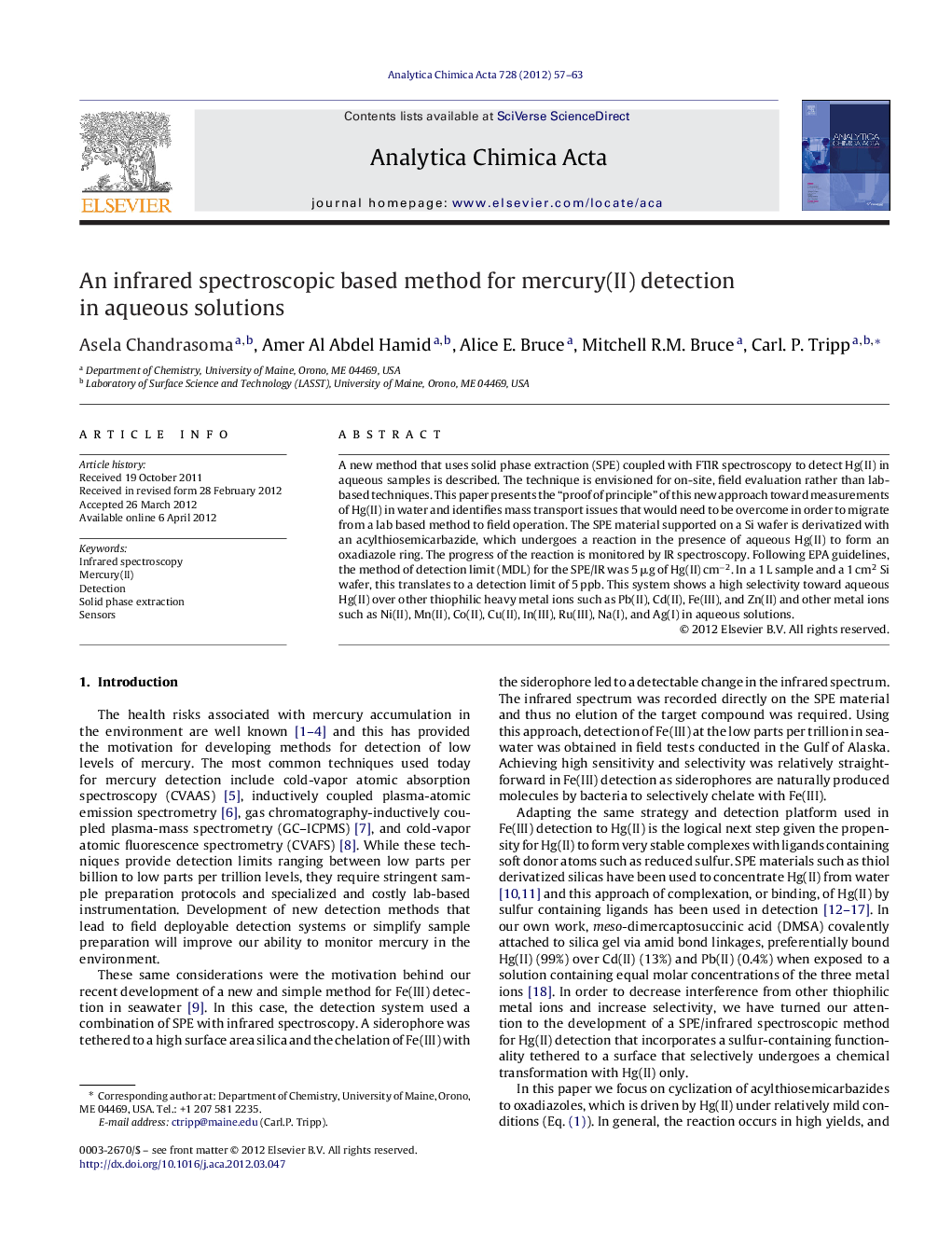| Article ID | Journal | Published Year | Pages | File Type |
|---|---|---|---|---|
| 1166575 | Analytica Chimica Acta | 2012 | 7 Pages |
A new method that uses solid phase extraction (SPE) coupled with FTIR spectroscopy to detect Hg(II) in aqueous samples is described. The technique is envisioned for on-site, field evaluation rather than lab-based techniques. This paper presents the “proof of principle” of this new approach toward measurements of Hg(II) in water and identifies mass transport issues that would need to be overcome in order to migrate from a lab based method to field operation. The SPE material supported on a Si wafer is derivatized with an acylthiosemicarbazide, which undergoes a reaction in the presence of aqueous Hg(II) to form an oxadiazole ring. The progress of the reaction is monitored by IR spectroscopy. Following EPA guidelines, the method of detection limit (MDL) for the SPE/IR was 5 μg of Hg(II) cm−2. In a 1 L sample and a 1 cm2 Si wafer, this translates to a detection limit of 5 ppb. This system shows a high selectivity toward aqueous Hg(II) over other thiophilic heavy metal ions such as Pb(II), Cd(II), Fe(III), and Zn(II) and other metal ions such as Ni(II), Mn(II), Co(II), Cu(II), In(III), Ru(III), Na(I), and Ag(I) in aqueous solutions.
Graphical abstractFigure optionsDownload full-size imageDownload as PowerPoint slideHighlights► Solid phase extraction coupled with FTIR spectroscopy selectively detects Hg(II)(aq). ► The method is selective vs. thiophilic ions such as Pb(II), Cd(II), Fe(III), and Zn(II). ► The method is also selective vs. metals such as Ni(II), Mn(II), Co(II), and Cu(II). ► Method of detection limit (MDL) for the SPE/IR is 5 μg of Hg(II) cm−2. ► The study identifies mass transport issues relevant for further development.
